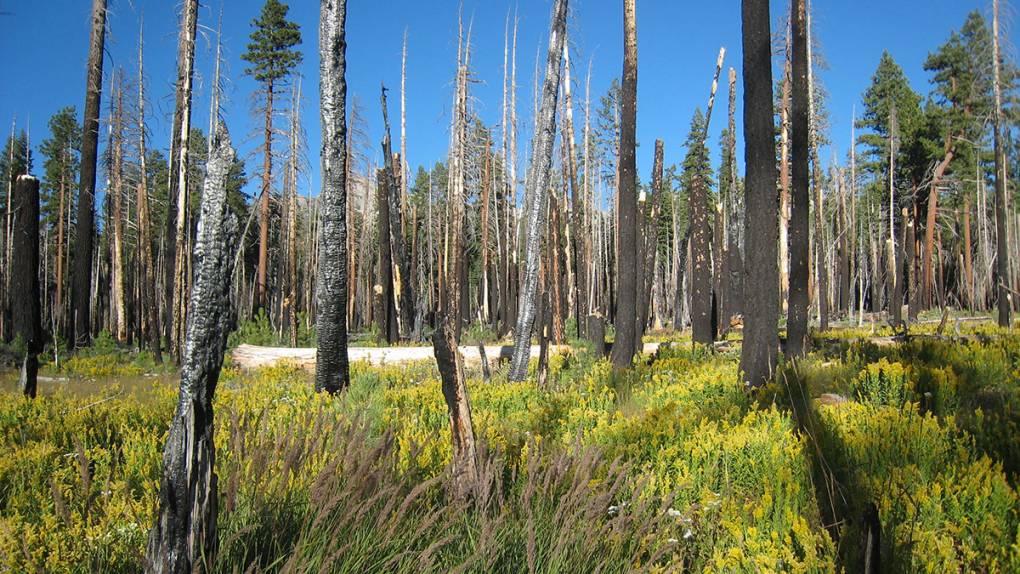Here’s the thing: we know what to do to help. We need to return the land to an older state — the state it was in when native peoples were its stewards. They used fire to their advantage, instead of quickly extinguishing every possible fire.
“The Karuk people have always lived on the Klamath River, and they used fire to manage resources,” Kathy McCovey, a Karuk tribal member and former longtime Forest Service employee, told me.
“If you can’t learn to live with fire and learn how to work with what it is and what it does to help maintain all the things needed for survival in a place like this, then basically you’re working against it, and if enough time goes by, it will work against you,” Bill Tripp, director of the Department of Natural Resources for the Karuk, said in a recent interview. “Things in nature have a tendency to win.”
Putting ‘Good Fire’ to Work
New research published this week from fire scientists at UC Berkeley underscores the truth that “good fire” in a forest protects against “bad fire.”
The authors examined half a century of data from areas of Yosemite, Sequoia, and Kings Canyon National parks, where — starting back in the Nixon administration — most naturally sparked fires have been allowed to burn. The authors found that in these basins fires are “self-limiting,” — burning themselves out before they get too big — meanwhile, the streams have more water in them and plant life is more diverse.
The researchers characterize this as a “triple win,” not the sort of language you typically find in research about wildfire and warming temperatures.
Yes, we are in a terrifying age of climate change, which is lengthening the fire season and drying plants to the point where they are primed to burn. But the researchers point out that in Yosemite’s Illilouette Creek Basin, fires have not increased in size and severity, thanks to the allowance of natural fire.
“So there are some places in California where we can look at and say, ‘Wow, it does work,’” says senior author Scott Stephens. But, he says, these fires have been allowed to burn in these areas since the ’70s.
Now, in 2020, the rest of California’s forests have had an extra half century to transform, becoming even more overgrown, with loads of extra wood to burn.
Changes at the Forest Service
This summer the Forest Service, which oversees 20 million acres of California’s forested lands, ditched this approach of “managed fire” — allowing fires to burn that don’t seem to pose a threat to people and infrastructure.
After pressure from politicians on both sides of the aisle, including Gov. Gavin Newsom, the agency’s new chief, Randy Moore, said in an Aug. 2 letter to staff that they will not use managed fire to improve forest health and will make any prescribed burnings subject to additional approval until further notice. This would normally be decided, not at the national level, but district by district.
Partially this is a staffing issue. The Forest Service is overstretched this season. As of July, 800 fire jobs the agency describes dryly as “forest technicians” went unfilled in California.
When all available people are fighting fires, no one can attend to prescribed fires that are so vital for preventing future conflagrations.
“The reality is we are resource limited,” wrote Moore in his Aug. 2 letter.
According to reporting from the San Francisco Chronicle, the agency already was not using managed fire to improve forest health this season.
The Tamarack Fire, which ignited on July 4 in a remote region south of Lake Tahoe, thrust this obscure policy into the spotlight.
The Forest Service originally chose not to send firefighters because of safety concerns. But days later winds changed, and the fire exploded and moved toward the town of Markleeville, destroying homes.
Seeing Beyond this Season
On Aug. 10, more than 40 fire and forest scientists sent a letter to Moore, expressing dismay over the blanket announcement.
